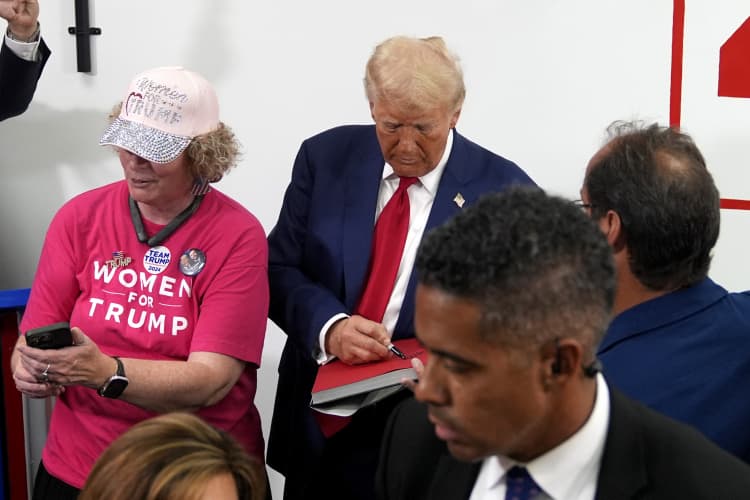Unions, Republican Migration Help GOP in Some Former Swing States
Every four years, new swing states emerge due to shifting demographics, candidates, and party platforms. Recent polls from Missouri and Indiana highlight these shifting election dynamics, as the once-swing states are now firmly Republican.
The latest The Hill/Emerson College poll, conducted Sept. 12-13 with 850 likely voters in Missouri and 1,000 in Indiana, underscores this trend as Trump led by 10 points in Missouri and 17 points in Indiana. In 2020, Trump won by similar margins, with a 16-point lead in Indiana and a 15.4-point lead in Missouri.
However, double-digit Republican wins weren’t always the norm in these states. As recently as 2008, they were key swing states. Indiana went to Obama by one point, while John McCain won Missouri by just 0.1 points. In 2012, Mitt Romney won Indiana by 10.2 points, and Trump won by 19 points in 2016. Missouri followed a similar pattern, with Romney winning by 9.4 points in 2012 and Trump by 18.6 points in 2016.
Missouri was historically a bellwether swing state, voting for the winning presidential candidate in every election from 1904 to 2004, except in 1956 when Adlai Stevenson won the state by 0.2 points while Dwight D. Eisenhower won the presidential election. Indiana, on the other hand, has supported Republicans in every election since 1940, except for Lyndon B. Johnson in 1964 and Obama in 2008.
One of the reasons swing states like Missouri started becoming solid red is the declining Democratic focus on unions and the growing support for unions within the Trump-era GOP. In August 2018, two years after Trump’s 2016 victory, Missouri voters decisively rejected a right-to-work law, passed by the Republican-controlled legislature, by a 2-1 margin. Missourians’ rejection of the anti-union right-to-work law reflects their pro-union stance, and Trump appealed to many union and working-class voters by advocating tariffs and renegotiating NAFTA to protect domestic workers and manufacturing.
More recently, Teamsters President Sean O’Brien spoke at the latest Republican National Convention in July, the first time Teamsters has addressed the Republican convention in the organization's 121-year existence. Post-RNC internal Teamsters’ polling also shows Trump leading Harris by over 25 points among Teamsters members. Trump’s appeal to union and blue-collar voters has bolstered his support in the Midwest and former swing states like Ohio and Missouri, as well as traditionally blue states like Pennsylvania and Michigan, which are now swing states.
Another reason some former swing states have shifted right is Republican migration from blue to purple and red states, as seen in one of the biggest swing states, Florida, with its 29 electoral votes. In 2008 and 2012, it supported Obama, but in 2016, it swung to Trump, who won by 1.2 points. In 2020, his lead grew to 3.4 points in the state despite Biden performing better nationally than Clinton.
The 2022 governor’s race was even more striking, with Ron DeSantis winning by nearly 20 points after securing victory by just 0.4 points four years earlier. In 2018, Democrats had 250,000 more registered voters than Republicans, but by 2022, Republicans had gained 600,000 new voters, while Democrats lost 50,000. While this demographic shift doesn’t account for the entire difference between the 2018 and 2022 gubernatorial elections, as DeSantis’ 2022 victory was also aided by a 14-point lead among independents, the net gain of 650,000 Republican voters contributed to his landslide win.
2024 State Races
Get caught up on the most important polling for the most consequential races of 2024.

